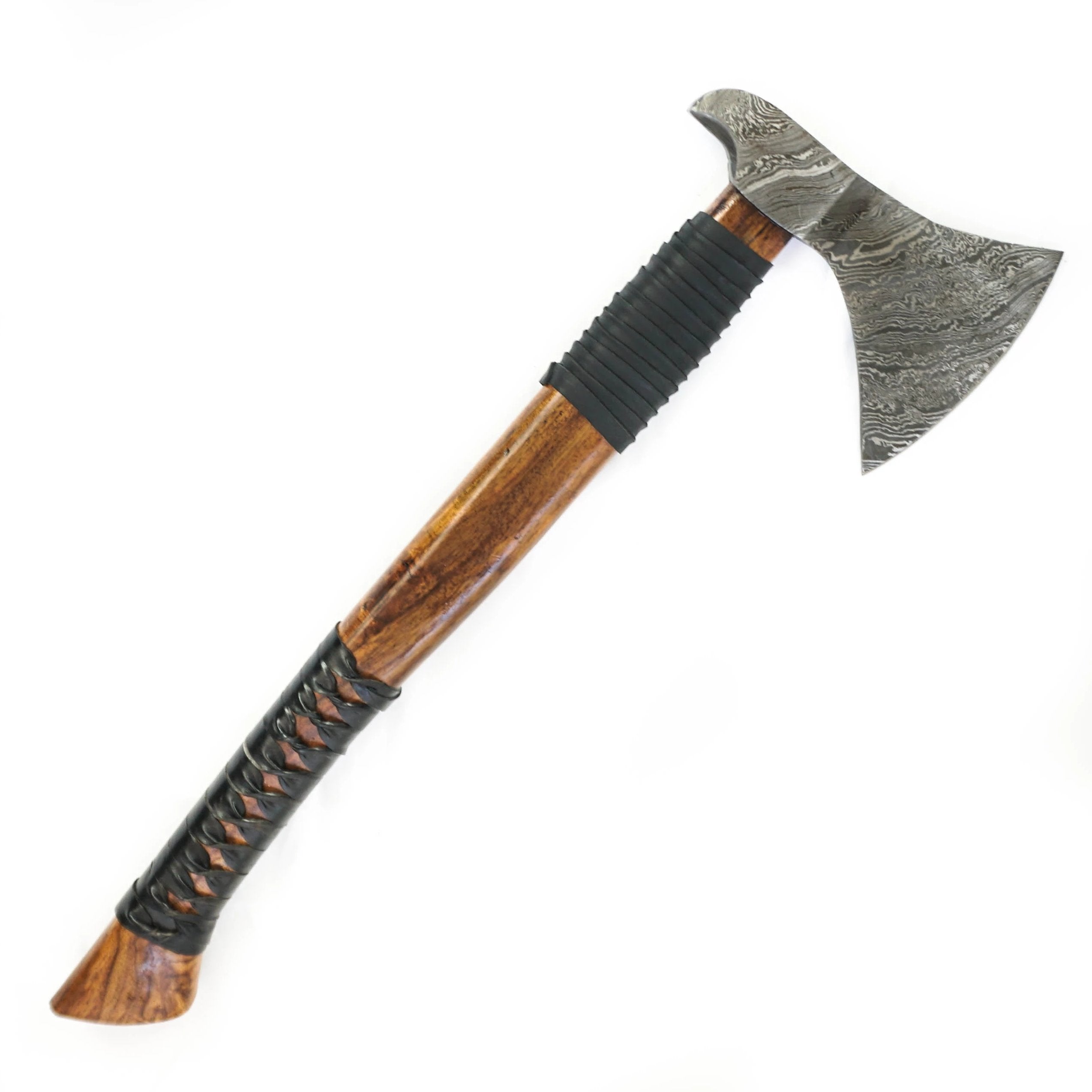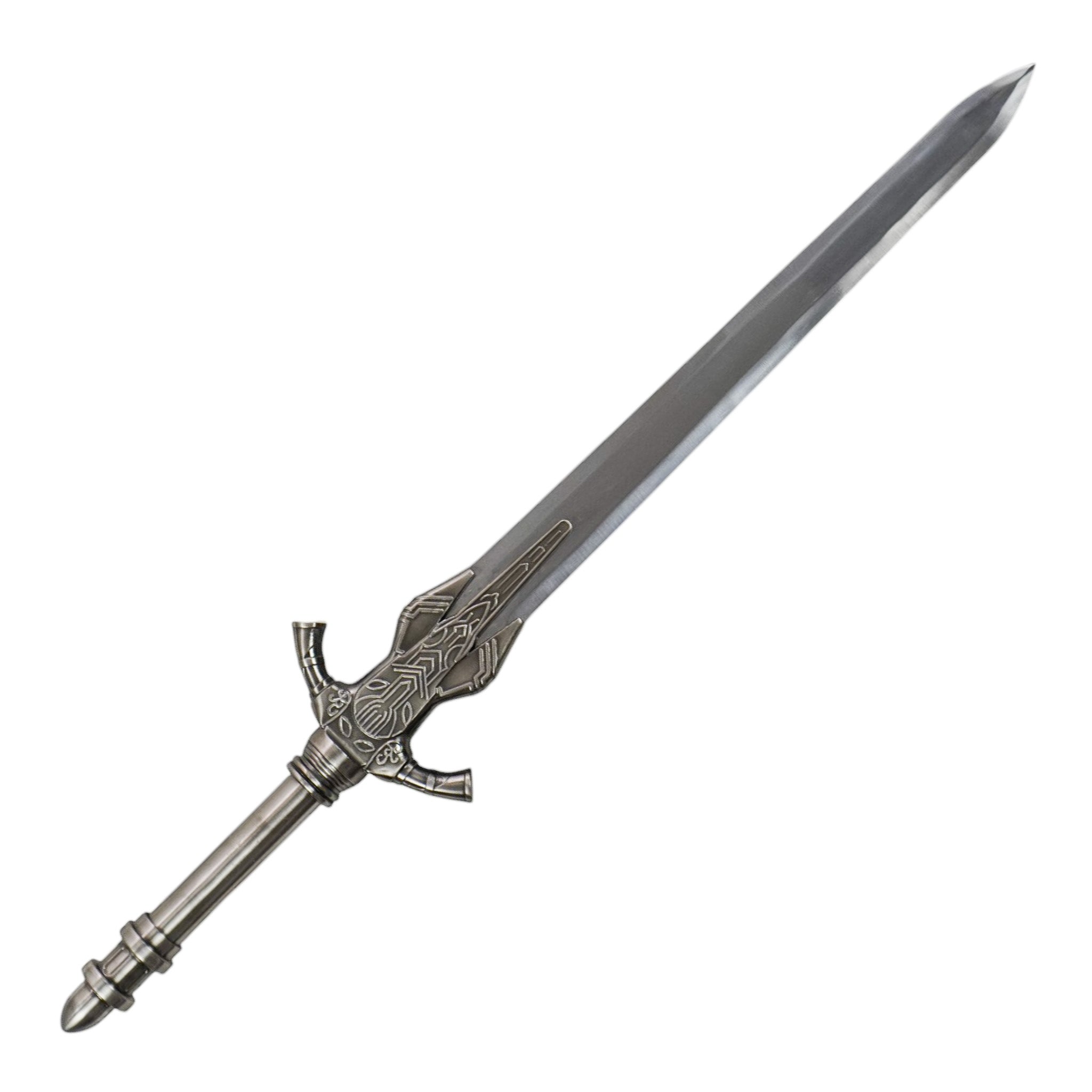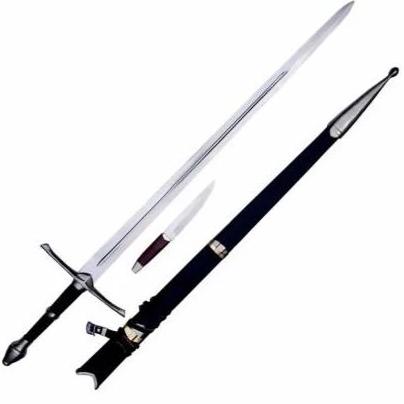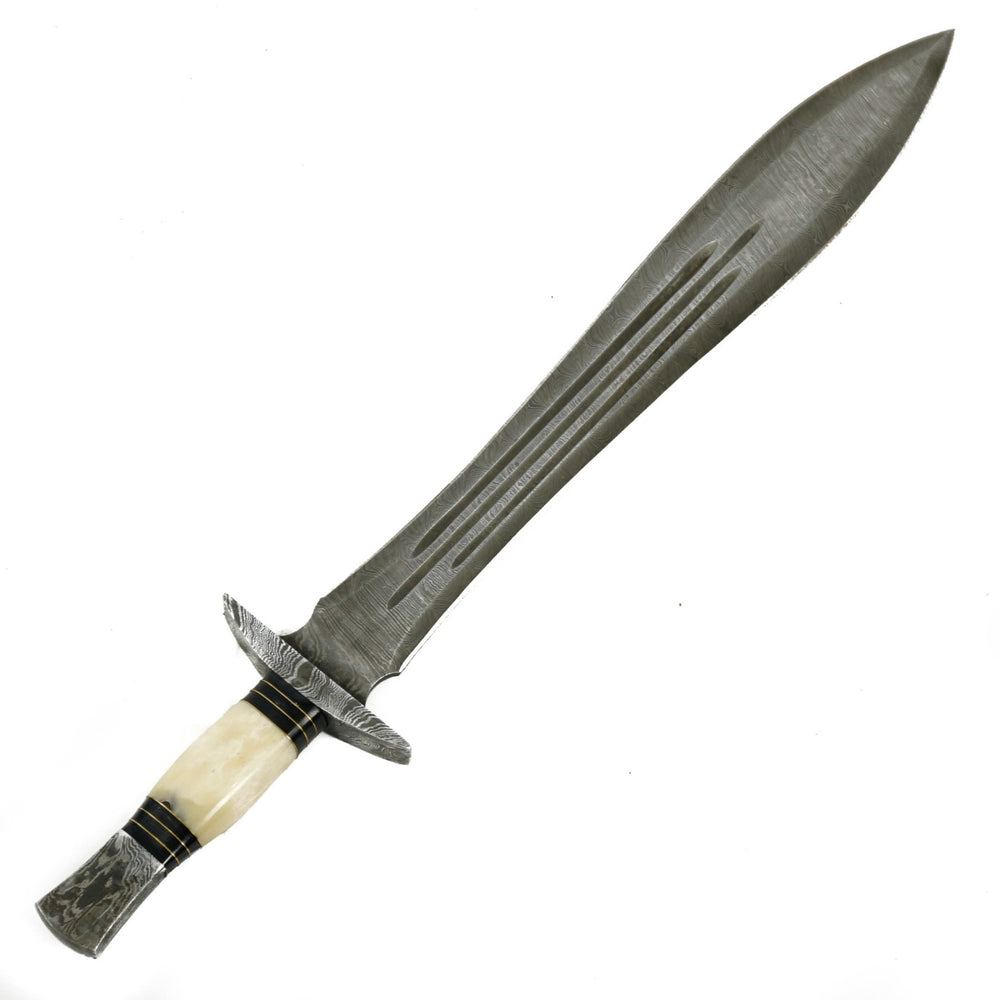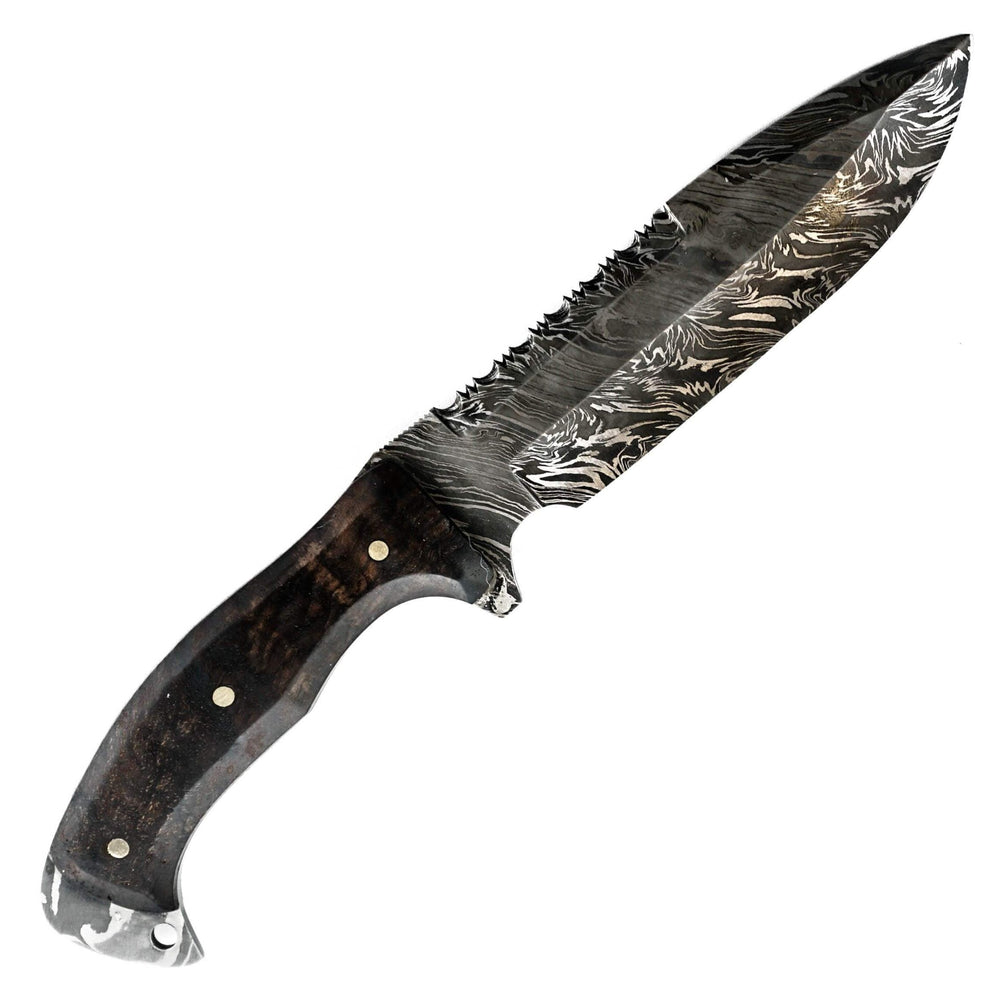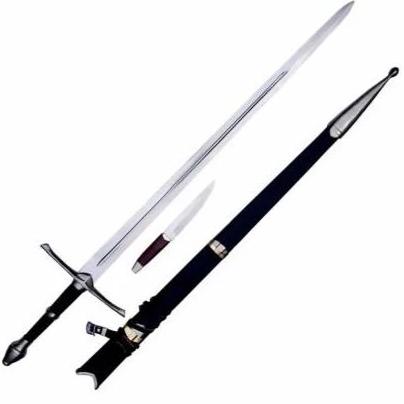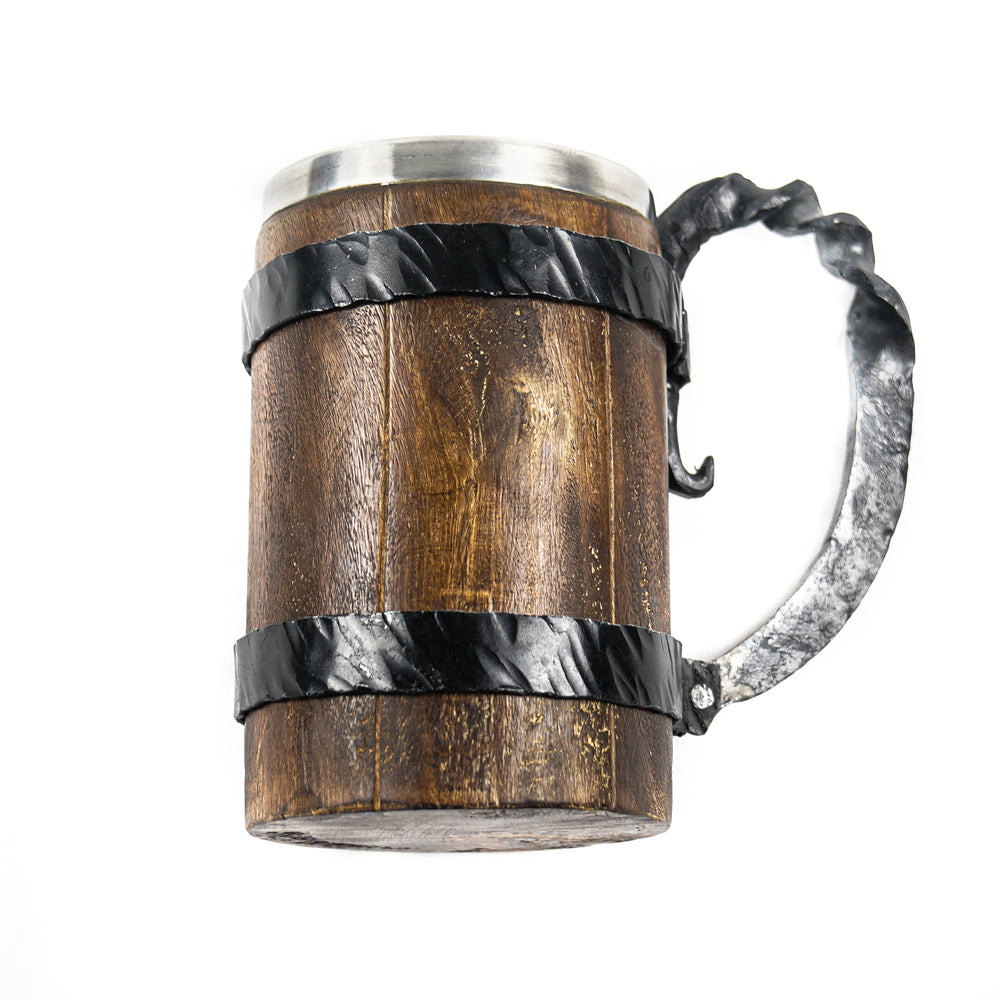Rapier vs. Longsword: A Comprehensive Analysis of Two Iconic Medieval Swords
The Rapier and Longsword are two of the most iconic swords in medieval history. More importantly, each has a unique design and fighting style, making them must-have swords!
Indeed, these swords have long been popularized in books and movies, where they symbolize ideals of power, courage, and honor.
This article will, therefore, analyze the two swords’ designs, fighting techniques, strengths and weaknesses, and historical significance for you.
But before we jump into anything, let’s clear something up. If you want to learn about the rapier vs. longsword divide, this is the article for you. However, we’ll also help you with recommendations for a popular medieval weapon reproducer for the best sword replicas!
No matter where your interest in medieval weaponry originates, this article will be a source of valuable insights for you. Plus, who wouldn’t want to hoard high-quality swords? As such, we will highlight relevant products from Battling Blades throughout this article. All so that readers can explore and purchase the swords that they find most appealing!
Beyond this, we will dive into the specifics of the rapier and Longsword. Let’s compare their design, fighting styles, and strengths and weaknesses.
Rapier vs. Longsword: Comparison of Design and Functionality
Several differences set them apart regarding the design of the rapier and Longsword, but first come to the designs and functionalities. Let’s take a look!
Rapier:
The question of “Are rapiers good weapons?” is one which can begin to be tackled with this section. This sword is, after all, a slender weapon used primarily for thrusting. It was pretty popular in the 1500s and the 1600s.
Also, the design includes a long, straight blade that tapers off to a sharp point. Furthermore, the sword boasts a complex hilt, which helps protect the wielder’s hand. This hilt usually includes the following for a more secure grip:
- A cup-shaped guard
- A knuckle bow
- A finger ring
In short, the design of the rapier prioritizes thrusting over cutting. This makes it absolutely perfect for dueling and self-defense.
Why? Because the slender blade can easily thrust through gaps in armor, of course! The rapier thus becomes a pro at finding chinks (i.e., weak spots) in the enemy. The rapier’s lightweight and balanced design allows quick movements and precise strikes, making it a favorite among fencers and sworders.
Battling Blades offers a wide range of rapiers, including the Elephant Rapier, a functional and durable sword perfect for historical reenactments, stage combat, and training. Made from pure Damascus steel, the reproduction is one product that won’t disappoint!
Longsword:
The Longsword is a pretty versatile weapon. It became popular during the late medieval and Renaissance periods, especially in Europe, where it was particularly prevalent.
The design generally features the following:
- A double-edged blade, usually 33 to 43 inches long
- A crossguard
- A pommel for striking
With these characteristics, it’s no surprise the Longsword is great at both cutting and thrusting. In fact, it’s an overall well-rounded weapon that can be used in various combat situations - it has been throughout history.
Moreover, the longer blade (and hence the name ‘Longsword’) allows a much greater reach than typical swords. This amplifies the power of cuts and thrusts while also ensuring you can use the sword from a safer distance!
The double-edged blade also made switching between offensive and defensive techniques easy.
Battling Blades offers great options, including the Giant Sword Series, a medieval longsword replica perfect for collectors and enthusiasts. As a high-carbon, 1095 steel sword, it’s perfect for authentic collectors who want to hoard reproductions!
Comparing the Designs:
The Rapier and Longsword have several design differences that set them apart.
On the one hand, the rapier is slender and used for thrusting. It has a long blade and a complex hilt below the blade.
Conversely, the Longsword gets props for versatility and the double-edged blade. This particular design allows for both sword skills, that is cutting and thrusting. And we’re not even mentioning that it also has a curved crossguard and pommel for blunt attacks.
Nevertheless, the rapier’s light weight and incredible balance have advantages over the Longsword as well. It allows for quick movements and far better precision. So while the Longsword is better for large-scale battles, rapiers are the go-to option for duels and one-on-ones!
Rapier vs. Longsword: Fighting Styles and Techniques
The rapier and Longsword couldn’t be more different when you talk about fighting styles and techniques. So let’s talk about each weapon’s approach to combat!
Rapier Fighting Style
As mentioned, the rapier is primarily a thrusting weapon designed for quick, precise attacks. The primary techniques used with a rapier involve parrying and counter-attacking.
Due to the rapier’s long, thin blade, a skilled fencer can use the weapon to quickly and accurately strike vulnerable points on an opponent’s body. The most common rapier techniques include the lunge, disengage, and beat.
- The lunge involves a quick, forward movement of the body to extend the weapon’s reach.
- The disengage involves twisting the blade to avoid an opponent’s parry and strike from a different angle.
- The beat involves using the rapier to strike an opponent’s blade to create an opening for an attack.
Longsword Fighting Style
Longsword fighting, on the other hand, is more versatile because you can cut and thrust with it.
Therefore, since you can do more with it, techniques also have a greater variety. Thus, they include multiple combinations of offense and defense, allowing the user to parry and strike better.
The most common longsword techniques include the cut, thrust, and slice.
- The cut involves a swinging motion of the blade to deliver a powerful strike.
- The thrust involves a forward thrust of the blade to penetrate an opponent’s armor or strike a vulnerable area.
- The slice involves a quick, diagonal cut that can be used to disarm or disable an opponent.
In addition to these basic techniques, longsword fighters often employ more complex techniques such as the Zornhau, Krumphau, and Schielhau. These techniques involve various combinations of strikes, parries, and grappling maneuvers.

Comparing the Two Styles
Regarding fighting styles, Rapiers, and Longswords offer very different approaches to combat. While the rapier is focused on quick, precise thrusts, the Longsword is a more versatile weapon with cutting and thrusting.
The rapier is therefore suited more to quick and agile fighters. Wielders with speed and precision deal better with skills needed to conquer the art of using this weapon. Oppositely, the Longsword more prefers more steady fighters who have balanced strength and speed.
Despite these differing aspects, though, both swords do have strengths and weaknesses that outmatch each other.
For example, a skilled fencer with a rapier could effortlessly penetrate an opponent’s defenses. Similarly, a skilled longsword fighter can deliver devastating cutting/thrusting attacks that can incapacitate an opponent.
It’s all a matter of perspective and training!
Building up on that, generic strengths and weaknesses should be covered in detail. After all, it might help you decide on the better sword.
Rapier vs. Longsword: Various Strengths and Weaknesses in Battle
Rapier Strengths
Rapiers were initially designed for thrusting and have since been extremely effective in duelings and one-on-one battles. Long and slender blades allow the wielder to move it precisely, while the thrust allows it to deliver powerful blows.
More importantly, it can slip through the weaknesses in armor and pierce cloth, so it’s great if utilized correctly. Pair that with greater mobility from not lugging around a heavy sword, and you’ve got a winner!
Rapier Weaknesses
The main disadvantage of the rapier was its lack of cutting ability.
Rapiers were not designed for hacking or slashing and therefore were less effective against armored opponents. Additionally, the thin blade of the rapier was more prone to breaking if it struck against a harder object. Such as another sword.
Longsword Strengths
As mentioned previously, this weapon’s versatility comes greatly from its ability to cut and thrust. That makes it a strength, of course.
Moreover, the Longsword is, in typical fashion, effective against armor and lack thereof due to its additional power. This ensures the great popularity of this particular sword.

Plus, a longsword (being a ‘long’ sword) has better reach and, therefore, better control. Longswords leverage distance created because of the blade length to succeed over their opponent!
Longsword Weaknesses
Unfortunately, though the Longsword is effective against armor and cloth, it isn’t as specialized as the rapier. This weapon is far less mobile in combat, nerfing its capabilities by a large degree.
Indeed, the size and weight of the additional material lower its effectiveness if fighting in close quarters. Remember, fighting with this at a bigger distance is easier than with a rapier.
Nevertheless, it’s also obvious that both swords have strengths and weaknesses, especially in battle. It’s up to you to review the pros and cons and choose the right weapon. We recommend analyzing the situation and choosing your fighting style carefully!
Still, we won’t begrudge you the dream of having both swords at your side (we’d do the same!). Battling Blades offers a lot of high-quality rapiers and longswords to suit your preferences and situations.
Choose Battling Blades; choose the perfect weapon.
Historical and Cultural Significance
The rapier and Longsword were powerful weapons during the medieval era and continue to hold cultural and historical importance. That’s why we’re looking at both the rapier and the Longsword in terms of historical and cultural significance.
Firstly, rapiers started getting popular in the 1500s and 1600s, especially in Spain and Italy. This was also because the rapier was clearly associated with the ever-popular Renaissance period. Even more importantly, it was adored as a symbol of culture and sophistication.
As a result, it then became a weapon of choice for the nobility. After all, not only did it exhibit a popularity that they coveted, but it also exuded elegance and precision.
Moreover, the rapier also had a powerful impact on dueling culture. Since it was designed for thrusting, it was naturally less deadly than other weapons.

That made it a particular dueling favorite, showcasing the duelers’ skills.
Needing to be deadly with a less powerful weapon made for a great testing ground for skills. Plus, this also reduced casualties and increased safety.
The Longsword, though, was a weapon used all throughout the medieval period. It remained popular while swords were popular, used by soldiers and knights alike. That’s not even mentioning its popularity in foreign locales - it was particularly prominent in German history.
In terms of medieval culture, this sword was associated with war, soldiers, and knights. This connection led to its association with chivalry and knighthood.
Mastering the Longsword was thus marked with nobility and honor.
Additionally, the Longsword has long played a preeminent role in medieval literature and art. Its depiction in these works inspires incredible and long-lasting fascination and admiration.
That’s also why medieval reproduction has taken the world by storm! If you want to obtain replicas of these weapons, we recommend Battling Blades. It’s a trusted provider of swords, weapons, and memorabilia.
Modern Adaptations of Rapier and Longsword Techniques in Contemporary Martial Arts
Recently, combat techniques used with these swords have regained popularity, in new and improved forms. Historical European Martial Arts (HEMA) has converted these skills into forms usable for sports and self-defense.
After all, even if they aren’t as used with swords, they remain sourced from the same discipline. They might power martial arts styles, but the basis in sword fighting keeps the spirit alive.
Though, there is the inclusion of the sword in modern HEMA adaptations. One such example is fencing, which integrates rapier techniques and swordplay into the sport.
In simple words, fencing is a sport that is combative in nature and involves two opponents. Like in duels, fencers use a sword-like weapon and attempt to showcase superiority by contacting the opponent’s body. This gives them points!
Modern fencing may have evolved from rapiers and smallswords, but the techniques and skills used remain the same.

Other examples refer to schools adding elements of HEMA into training programs. For example, German Longsword techniques have very clearly become part of various Krav Maga schools’ curricula.
For reference, Krav Maga is a modern Israeli self-defense martial arts style. You can learn more about this here!
Of course, incorporating rapier and longsword techniques into contemporary martial arts is not to be underestimated.
After all, practitioners can use them to improve footwork, timing, and body mechanics. Learning these will net their overall martial arts improvement and garner a greater appreciation for culture. Plus, modern HEMA adaptations can also be super useful in self-defense or martial arts competitions.
However, it’s also important to acknowledge the weapons (rapiers and longswords) were designed for violent confrontations. As a practitioner, you should ALWAYS use caution and train properly with qualified instructors.
In short, the Rapier and the Longsword are two incredibly iconic weapons. Each has a long history, a deep culture, and a unique design and fighting style.
The rapier may be known for precision and the Longsword for versatility, but both are great weapons. Don’t worry, though - you can dabble in both sword arts to see which fits you the best.
For that, we recommend choosing a well-designed rapier and Longsword for a great beginning. You can always begin with a rapier bundle - the sword is made of pure Damascus steel! It also comes with a sword stand, a sword sharpener, and a maintenance kit.
Secondly, you can also buy a longsword bundle. Just like the rapier pack, this includes a sharpener, a stand, a maintenance kit and is made from Damascus steel.
Nevertheless, the significant issue is that these swords are influential beyond their combat purposes. After all, countless historical and cultural artifacts owe their existence to medieval weaponry.
Plus, you can use the sword techniques from those times to understand society and its values from that time period. For historians and anthropologists, that makes swords a treasure trove!
Today, their techniques are still used and adapted in martial arts disciplines.
They serve as a testament to their lasting impact on the world of combat and beyond.
The Bottom Line
Since this article has spent time comparing the rapier and the Longsword, you must understand the topic in great detail. Why don’t we wrap up?
Both weapons, quite obviously, have distinct strengths and weaknesses depending on the situation. To choose, think about your fighting style, preferences, and battle objectives.
And if you’re trying to figure out the answer to the rapier longsword debate? Both weapons are powerful - how you wield them wins you the battle.
Still, if you’re looking for a true comparison, history and culture must also be acknowledged. They have, after all, played huge roles in shaping warfare and medieval culture. Even today, the cultural value retains itself with reproductions in modern martial arts.
Plus, rapiers and longswords are just plain popular with collectors and enthusiasts. Even with a rapier vs. longsword contest, you’re sure to have both at hand, no matter what you’re supporting.
You can get those very coveted swords from Battling Blades. As a leading supplier of high-quality medieval weaponry, it supplies rapiers, longswords, broadswords, and even Katanas!
Battling Blades’ products are constructed from the finest materials and quality. They are guaranteed to meet expected performance standards!
So whether you’re a collector, martial artist, or historical reenactor, we have the perfect sword to meet your needs.
Visit Battling Blades today to browse our extensive collection and find your perfect blade.

